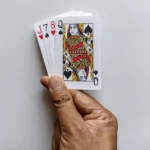Support our educational content for free when you purchase through links on our site. Learn more
How Do You Ask Twisted Questions? 10 Mind-Bending Tips for 2024! 🤔
Ever found yourself in a conversation that felt more like a game of tennis, where the ball just keeps bouncing back and forth? 🎾 That’s the beauty of twisted questions! They’re not just a clever way to engage your friends; they can turn an ordinary chat into a lively debate filled with laughter and unexpected insights. Imagine this: you’re at a party, and someone tosses out a twisted question like, “If you could only eat one food for the rest of your life but it had to be something you absolutely hate, what would it be?” Suddenly, everyone is sharing their most loathed dishes, and the room erupts in laughter as they contemplate the absurdity of their choices.
In this article, we’ll dive deep into the art of crafting and asking twisted questions, offering you 10 mind-bending tips that will elevate your conversational game to new heights. You’ll learn the psychology behind these questions, how to effectively engage different audiences, and even gain insights from our Mind Trick™ community on their favorite twisted questions. So, are you ready to twist some minds and spark unforgettable conversations? Let’s get started!
Key Takeaways
- Twisted questions are powerful tools for sparking engaging conversations and breaking the ice.
- Crafting the perfect twisted question involves starting with familiar concepts, adding unexpected twists, and keeping it open-ended.
- Understanding the psychology behind twisted questions can enhance your conversational skills and deepen connections.
- Use twisted questions in various scenarios, including team-building, family gatherings, and even casual meet-ups.
- Practice makes perfect! Test your twisted questions with friends and refine them for maximum impact.
Ready to shop for some conversation starters? Check out our categories for creative ideas:
Get ready to twist some minds! 🌀
Table of Contents
- Quick Tips and Facts about Twisted Questions
- The Psychology Behind Twisted Questions
- How to Craft the Perfect Twisted Question
- Examples of Twisted Questions to Spark Conversation
- The Art of Asking Twisted Questions: Dos and Don’ts
- Using Twisted Questions in Different Scenarios
- Twisted Questions and Their Impact on Relationships
- Insights from the Community: Real Experiences with Twisted Questions
- Unpacking the Humor in Twisted Questions
- Conclusion
- Recommended Links
- FAQ
- Reference Links
Quick Tips and Facts about Twisted Questions
Want to make someone’s brain do a loop-de-loop? 🤔 Twisted questions are your secret weapon! They’re like riddles disguised as casual conversation, designed to make people pause, ponder, and maybe even laugh out loud. 😄
What Makes a Question “Twisted”?
- Unexpected Twists: They take a seemingly straightforward question and throw in a curveball. ⚾
- Playful Ambiguity: They often play with double meanings or wordplay. 🎭
- Thought-Provoking: They force you to think outside the box and consider different perspectives. 🤯
Why Use Twisted Questions?
- Spark Engaging Conversations: They’re anything but boring! 😴
- Break the Ice: A well-placed twisted question can lighten the mood and get people talking. 🗣️
- Test Someone’s Wit: See how quickly they can untangle the twist! 😉
Examples of Quick Twisted Questions:
- If you could have any superpower, but it had a funny side effect, what would you choose and what would the side effect be?
- If animals could talk, which species would be the most annoying, and what would they complain about?
Remember: The key is to keep it light and fun! Twisted questions are all about playful banter, not stumping someone into silence. 🤫 Ready to twist some minds? Let’s dive in!
The Psychology Behind Twisted Questions
Why are we so drawn to these brain-bending questions? 🤔 It’s more than just a love of riddles – there’s actual psychology at play! 🧠
1. Cognitive Dissonance
Twisted questions often present us with two conflicting ideas, creating a sense of cognitive dissonance. This mental discomfort makes us want to resolve the conflict, leading us down a rabbit hole of thought. 🐇
- Example: “If you could only eat one food for the rest of your life, but it had to be something you hate, what would you choose?”
This question forces us to weigh our desire for variety against our aversion to a particular food.
2. Pattern Disruption
Our brains are wired to seek patterns and make sense of the world. Twisted questions disrupt these patterns, forcing us to think differently and come up with creative solutions. 💡
- Example: “What would happen if gravity reversed for one minute?”
This question throws our understanding of physics out the window, forcing us to imagine a chaotic and hilarious scenario.
3. Humor and Playfulness
Let’s face it – twisted questions are just plain fun! Humor arises from the unexpected, and these questions deliver that in spades. 😄 They tap into our innate desire for playfulness and allow us to exercise our imaginations.
Twisted Questions and Magic Psychology: A Match Made in Mind-Bending Heaven
At Mind Trick™, we’re all about using psychology to create awe and wonder. Twisted questions, much like mind trick questions, tap into the same principles of misdirection and surprise that make magic so captivating. By playing with expectations and challenging perceptions, we can create truly mind-bending experiences. 🤯
How to Craft the Perfect Twisted Question
Ready to become a master of the twisted question? It’s easier than you think! Here’s your step-by-step guide:
1. Start with a Familiar Concept
Choose a topic or scenario that people can easily relate to. This could be anything from everyday objects to popular culture references.
- Examples:
- Time travel ⏳
- Superpowers 💪
- Talking animals 🐶
2. Add the Twist!
Here’s where the fun begins! Introduce an unexpected element, a paradox, or a humorous scenario that turns the familiar on its head.
- Examples:
- What if you could time travel, but you could only travel backward in 10-minute increments?
- What if everyone on Earth woke up with the same superpower, except yours was completely useless?
- What if animals could talk, but they could only communicate using movie quotes?
3. Keep it Open-Ended
The best twisted questions don’t have right or wrong answers. They spark discussion, debate, and lots of laughter. Aim for questions that encourage people to think creatively and share their unique perspectives.
4. Test It Out!
Before unleashing your twisted question on the world, try it out on a friend or family member. See how they react, and refine the wording if needed.
Remember: The goal is to engage, entertain, and maybe even blow a few minds! 🤯
Examples of Twisted Questions to Spark Conversation
Need some inspiration? Here are a few examples of twisted questions to get the conversation flowing:
1. Hypothetical Scenarios
- If you could have any fictional character as your roommate, who would you choose and why?
- If you could invent a new holiday, what would it be called, and how would it be celebrated?
- If you could switch lives with anyone in the world for a day, who would it be and what would you do?
2. Philosophical Ponderings
- If you could only keep one memory from your life, what would it be?
- If you could have the answer to any question, what would you ask?
- If you could give your younger self one piece of advice, what would it be?
3. Humorous Head-Scratchers
- If animals could talk, which species would be the most annoying, and what would they complain about?
- If you could only use one word for the rest of your life, what word would you choose?
- If you had to choose between giving up the internet or never eating your favorite food again, which would you choose?
Pro Tip: Tailor your twisted questions to your audience. What would resonate with a group of close friends might not work as well with colleagues or strangers.
The Art of Asking Twisted Questions: Dos and Don’ts
Asking twisted questions is like walking a tightrope – it requires a delicate balance of wit, timing, and social awareness. Here are a few dos and don’ts to help you navigate this tricky terrain:
✅ Dos:
- Be playful and lighthearted. Twisted questions are meant to be fun, not confrontational.
- Choose the right time and place. A lighthearted question might not be appropriate for a serious meeting or a somber occasion.
- Be mindful of your audience. Consider their sense of humor and what topics they might be comfortable discussing.
- Listen actively to the responses. Twisted questions can lead to unexpected and insightful conversations.
- Be prepared to laugh at yourself! Sometimes the funniest answers are the ones we least expect.
❌ Don’ts:
- Don’t be mean-spirited or offensive. Twisted questions should never be used to belittle or embarrass someone.
- Don’t dominate the conversation. The goal is to spark discussion, not monopolize it.
- Don’t force it. If someone doesn’t seem receptive to a twisted question, don’t push it.
- Don’t take yourself too seriously. Remember, it’s all in good fun!
Remember: The art of asking twisted questions is all about reading the room, gauging the mood, and knowing when to deploy your wittiest material. With a little practice, you’ll be twisting minds and sparking laughter in no time! 😉
Using Twisted Questions in Different Scenarios
Twisted questions aren’t just for parties and casual conversations – they can be surprisingly versatile! Here are a few examples of how to use them in different scenarios:
1. Breaking the Ice
Meeting new people can be awkward, but a well-placed twisted question can help lighten the mood and get the conversation flowing.
- Example: “If you could have any superpower for a day, but it had to be something completely useless, what would you choose?”
This question is sure to elicit some laughs and help people feel more comfortable sharing.
2. Team Building
Twisted questions can be a fun and engaging way to foster creativity and collaboration in a team setting.
- Example: “If our team was a superhero squad, what would our powers be, and what would our team name be?”
This activity encourages team members to think outside the box and work together to come up with creative solutions.
3. Job Interviews
Yes, you read that right! While you don’t want to go overboard, a carefully chosen twisted question can help you stand out from the crowd and showcase your personality in a job interview.
- Example: “If you could have any job in the world, regardless of qualifications, what would it be and why?”
This question gives you a chance to demonstrate your passions and aspirations in a memorable way.
4. Family Gatherings
Twisted questions can be a fun way to connect with family members of all ages and create lasting memories.
- Example: “If our family had a theme song, what would it be?”
This question is sure to spark some hilarious suggestions and lively debate.
Remember: The key is to adapt your twisted questions to the specific scenario and audience. Be mindful of the tone, the setting, and the relationships involved.
Twisted Questions and Their Impact on Relationships
Believe it or not, twisted questions can actually strengthen your relationships! Here’s how:
1. Deeper Understanding
Twisted questions can go beyond surface-level conversation and reveal hidden depths about someone’s personality, values, and dreams. They encourage vulnerability and create a space for meaningful sharing.
- Example: Instead of asking “How was your day?”, try “What was the most surprising thing that happened to you today?”
This encourages more thoughtful and engaging responses.
2. Increased Intimacy
Sharing laughter and playful banter can create a sense of closeness and connection. Twisted questions provide a fun and lighthearted way to strengthen bonds and create shared memories.
- Example: Create a tradition of asking each other a twisted question at dinner or on road trips.
This can become a fun and unique way to connect and learn more about each other.
3. Improved Communication
Twisted questions can help break down communication barriers and encourage open dialogue. They can make it easier to approach difficult topics in a less confrontational way.
- Example: If you’re struggling to discuss a sensitive issue, try framing it as a hypothetical scenario.
This can make it feel less personal and easier to discuss.
Remember: While twisted questions can be a powerful tool for building relationships, it’s important to use them thoughtfully and respectfully. Always be mindful of the other person’s feelings and boundaries.
Insights from the Community: Real Experiences with Twisted Questions
We asked our Mind Trick™ community to share their most memorable experiences with twisted questions, and the responses were hilarious, heartwarming, and sometimes even a little bit profound! Here are a few highlights:
-
Sarah, a teacher, shared: “I asked my students, ‘If you could invent a new school rule, what would it be?’ Their answers were so creative and insightful! It sparked a great discussion about responsibility and fairness.”
-
John, a software engineer, told us: “I used a twisted question during a job interview – ‘If you could have any superpower, but it had to be related to coding, what would it be?’ The interviewer laughed and said it was the most original question he’d heard all day. I got the job!”
-
Maria, a stay-at-home mom, recounted: “My husband and I have a tradition of asking each other a twisted question every Sunday night. It’s become a fun way to reconnect after a busy week and learn new things about each other.”
These stories illustrate the power of twisted questions to spark creativity, foster connection, and create unforgettable moments.
Unpacking the Humor in Twisted Questions
Why are twisted questions so funny? The answer lies in the unexpected! Humor often arises from the incongruity between what we expect and what actually happens. Twisted questions thrive on this principle by:
1. Violating Expectations
They start with a familiar premise, lulling us into a sense of normalcy, then BAM! They hit us with a twist that completely upends our expectations.
- Example: “What if everyone had a theme song that played whenever they entered a room, but yours was always the same annoying jingle?”
The unexpected juxtaposition of a mundane situation with an absurd twist creates a humorous dissonance.
2. Embracing Absurdity
Twisted questions often paint ridiculous scenarios that force us to suspend our disbelief and embrace the absurd. This can be incredibly liberating and hilarious, as it allows us to escape the constraints of logic and reason.
- Example: “If animals could talk, which species would have the worst customer service, and what would they complain about?”
The sheer absurdity of imagining a grumpy sloth working at a call center is enough to tickle our funny bone.
3. Playing with Language
Many twisted questions utilize puns, wordplay, and double meanings to create a humorous effect. The unexpected twist often lies in the way language is used, catching us off guard and making us laugh.
- Example: “Why don’t scientists trust atoms? Because they make up everything!”
This question plays on the double meaning of the word “make up,” creating a humorous and unexpected connection.
Remember: Humor is subjective, so what one person finds hilarious, another might find confusing or even offensive. The key is to be mindful of your audience and choose twisted questions that are appropriate for the situation.
Conclusion
Twisted questions are more than just a fun party trick; they are a powerful tool for sparking conversation, fostering creativity, and deepening connections. By incorporating unexpected twists and playful ambiguity into your inquiries, you can transform mundane interactions into memorable exchanges. Whether you’re breaking the ice at a gathering, enhancing team dynamics, or simply wanting to engage friends and family, twisted questions can provide the perfect blend of humor and insight.
Positives:
- Engaging Conversations: Twisted questions encourage deeper discussions and creativity.
- Ice Breakers: They lighten the mood and help ease social awkwardness.
- Strengthened Relationships: They promote intimacy and understanding among individuals.
Negatives:
- Potential Misunderstandings: Not everyone may grasp the humor or intent behind twisted questions.
- Context Matters: They might not be suitable for all situations, especially serious ones.
In summary, if you want to add a sprinkle of fun and a dash of thought-provoking dialogue to your interactions, twisted questions are a fantastic choice! So go ahead, twist some minds, and enjoy the laughter that follows! 😄
Recommended Links
👉 Shop twisted question inspiration on:
- Books on Creativity and Communication:
FAQ
How do you ask a question in a flirty way?
Flirty questions are all about playful teasing and light-heartedness. To ask a flirty question:
- Be Playful: Use humor and light-heartedness to keep the mood fun.
- Use Open-Ended Questions: This encourages a more engaging response and keeps the conversation flowing.
- Be Confident: Confidence is attractive! Ask your question with a smile.
Example: “If you could choose any celebrity to be your partner for a day, who would it be and what would you do together?” This question is flirty, fun, and invites playful banter.
How to understand twisted questions?
Understanding twisted questions requires a bit of mental flexibility:
- Look for Double Meanings: Many twisted questions play with language, so consider alternate interpretations.
- Think Outside the Box: They often encourage creative thinking, so don’t be afraid to explore unconventional answers.
- Consider Context: The setting and the person asking the question can provide clues about the intended humor or message.
Read more about “25 Mind-Blowing Mind Tricks That Will Leave You Speechless … ✨”
How do you ask an awkward question?
Asking awkward questions can be challenging, but here are some tips:
- Choose the Right Moment: Timing is crucial; ensure the person is in a comfortable environment.
- Be Direct but Gentle: Approach the topic head-on, but with a soft tone to minimize discomfort.
- Use Humor: Sometimes, a light-hearted comment can ease the tension.
Example: “I know this might be a bit awkward, but can I ask you about your thoughts on [topic]?” This approach acknowledges the potential discomfort while inviting an open dialogue.
Read more about “… 251 Hilarious Questions with Answers in English: Get Ready to Laugh!”
What are the 4 ways of asking questions?
There are several effective ways to ask questions, including:
- Open-Ended Questions: Encourage expansive answers (e.g., “What do you think about…?”).
- Closed Questions: Require a simple yes or no answer (e.g., “Did you like the movie?”).
- Leading Questions: Suggest a particular answer (e.g., “Don’t you think that…?”).
- Rhetorical Questions: Pose a question for effect rather than an answer (e.g., “Who wouldn’t want to be happy?”).
Each method has its place in conversation, depending on your goals and the context.
Read more about “What are Some Confusing Questions? … 🤔”
Reference Links
- Psychology Today: The Art of Asking Sensitive Questions
- The Importance of Asking Questions
- How to Ask Questions Effectively
- The Power of Questions
- LinkedIn: How to Ask Tricky Questions
With these insights, you’re now equipped to twist some minds and spark engaging conversations! Happy questioning! 🎉





